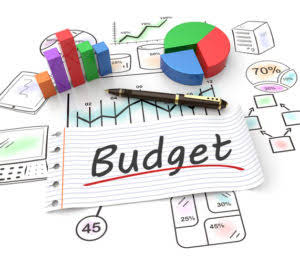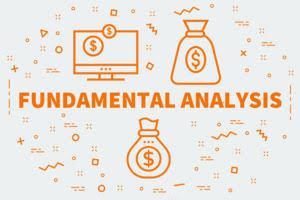Revisiting Tony’s T-Shirts, Figure 2.16 shows how the variable cost of ink behaves as the level of activity changes. In a scatter diagram, all parts would be plotted on a graph with activity (gallons of water used, in the example graph later in this section) on the horizontal axis and cost on the vertical axis. A line is drawn through the points and an estimate made for total fixed costs at the point where the line intersects the vertical axis at zero units of activity. To compute the variable cost per unit, the slope of the line is determined by choosing two points and dividing the change in their cost by the change in the units of activity for the two points selected. A committed fixed cost3 is a fixed cost that cannot easily be changed in the short run without having a significant impact on the organization. For example, assume Bikes Unlimited has a five-year lease on the company’s production facility, which costs $8,000 per month.
- For example, assume Bikes Unlimited’s mixed sales compensation costs of $10,000 per month plus $7 per unit is only valid up to 4,000 units per month.
- It is up to the cost accountant to determine the relevant range and make clear to management that estimates being made for activity outside of the relevant range must be analyzed carefully for accuracy.
- The company’s manufacturing overhead costs tend to fluctuate from one month to the next, and management would like an accurate estimate of these costs for planning and decision-making purposes.
At certain levels of activity, new machines might be needed, which results in more depreciation, or overtime may be required of existing employees, resulting in higher per hour direct labor costs. The definitions of fixed cost and variable cost assumes the company is operating or selling within the relevant range (the shaded area in the graphs) so additional costs will not be incurred. Cost behavior analysis refers to management’s attempt to understand how operating costs change in relation to a change in an organization’s level of activity. These costs may include direct materials, direct labor, and overhead costs that are incurred from developing a product.
Relevant Range
Now that we have identified the three key types of businesses, let’s identify cost behaviors and apply them to the business environment. In managerial accounting, different companies use the term cost in different ways depending on how they will use the cost information. Mixed costs include a combination of fixed and variable costs components. The fixed cost does not change with changes in production (except for larger investments), while the remaining portion (variable costs) varies directly based on production volume.
Using the solution from Example #2, calculate the fixed cost per unit for 12,000 units. The three basic cost behavior patterns are known as variable, fixed, and mixed. With the graphical method, we draw the graphic line of semi-variable cost by taking output on the x-axis and total semi-variable cost at the y-axis.
- Then we calculate total sale and total cost at the lowest level of production.
- Ultimately, businesses strategically group costs in order to make them more useful for decision-making and planning.
- Notice that the per unit cost ranges from $0.44 down to $0.092 each, depending on the quantity purchased.
- Table 5.2 provides the total and per unit fixed costs at three different levels of production, and Figure 5.2 graphs the relation of total fixed costs (y-axis) to units produced (x-axis).
If the minimum or maximum expense range is exceeded, this can indicate that management is acting without authority or is pursuing unauthorized activities. Excessive costs may even be a red flag that possible fraud is occurring. Cost accounting helps ensure that financial costs are within an acceptable range and helps an organization make reliable forward-looking financial decisions.
Business in Action 5.1
As shown in the following table, cost 1 is a variable cost because as the number of units produced changes, total costs change (in proportion to changes in activity) and per unit cost remains the same. Cost 2 is a fixed cost because as the number of units produced changes, total costs remain the same and per unit costs change. Cost 3 is a mixed cost because as the number of units produced changes, total cost changes (but not in proportion to changes in activity) and per unit cost changes. It is important to remember that even though Tony’s costs stepped up when he exceeded his original capacity (relevant range), the behavior of the costs did not change. His fixed costs still remained fixed in total and his total variable cost rose as the number of T-shirts he produced rose.
Sufficient margin to offset the fixed cost
These elements include such items as depreciation, rent, insurance, property taxes, and the like. These costs are not easily adjusted with changes in business activity. If
the total direct labor cost increases as the volume of output
increases and decreases as volume decreases, direct labor is a
variable cost.
cost behavior definition
Now that we have identified the three key types of businesses, let’s identify cost behaviors and apply them to the business environment. In managerial accounting, different companies use the term cost in different ways depending on how they will use the cost information. Different decisions require different costs classified in different ways.
The Nature Of Costs
Period costs are simply all of the expenses that are not product costs, such as all selling and administrative expenses. It is important to remember that period costs are treated as expenses in the period in which they occur. In other words, they follow the rules of accrual accounting practice by recognizing the cost (expense) in the period in which they occur regardless of when the cash changes hands. For example, Bert pays his business insurance in January of each year. Bert’s annual insurance premium is $10,800, which is $900 per month.
In an ideal setting, one would try to produce at the right-most edge of a fixed-cost step. This squeezes maximum productive output from a given level of turbotax makes it easier for coinbase customers to report their cryptocurrency transactions expenditure. However, for a business with many fixed costs, it is more challenging to orchestrate operations so that each component is fully utilized.
As a result, it may be necessary to analyze some fixed costs together with some variable costs. Ultimately, businesses strategically group costs in order to make them more useful for decision-making and planning. Two of the broadest and most common grouping of costs are product costs and period costs.










